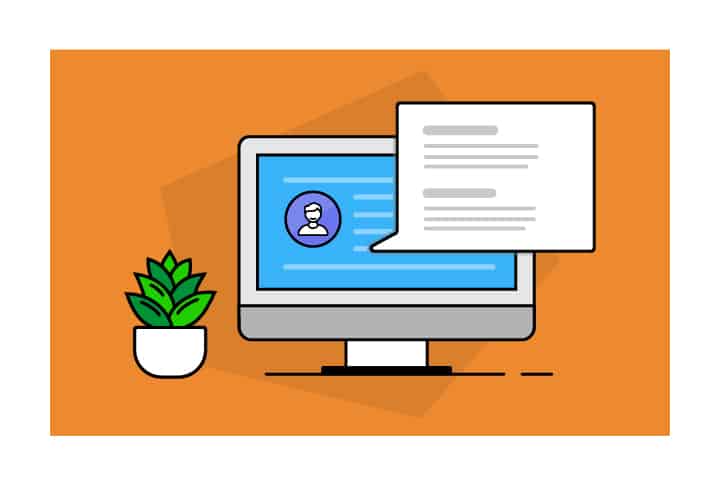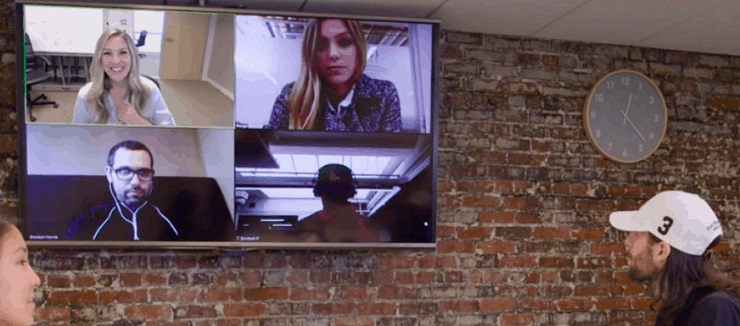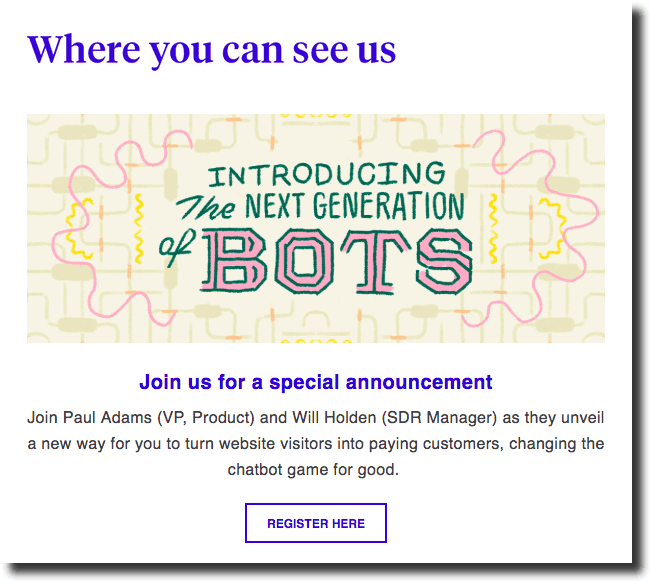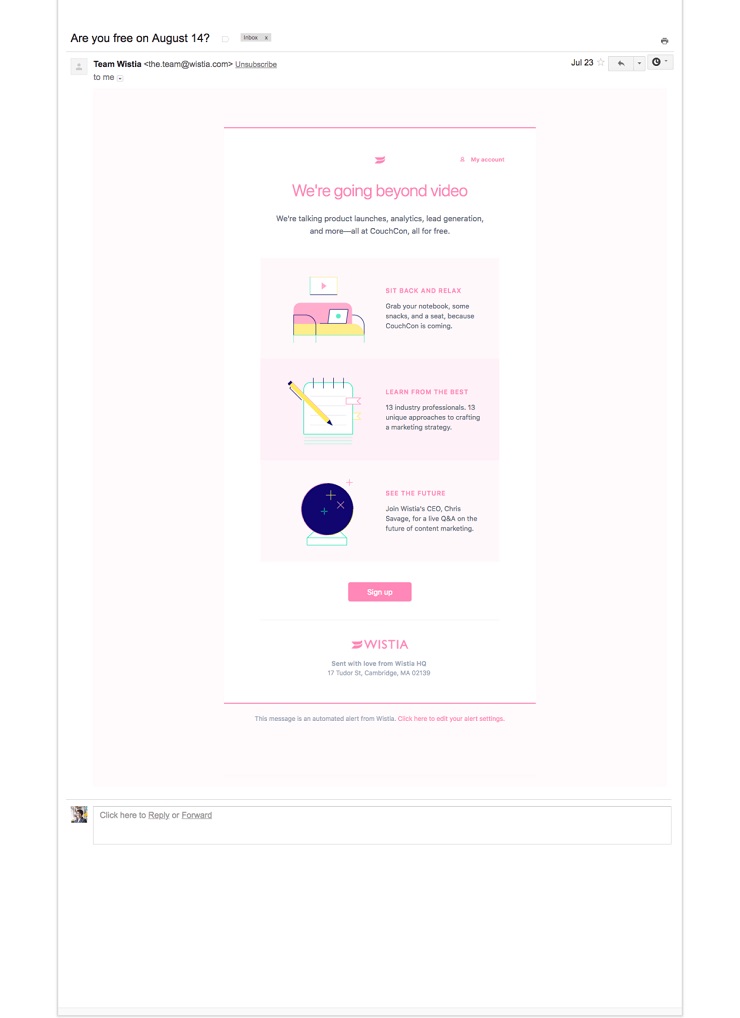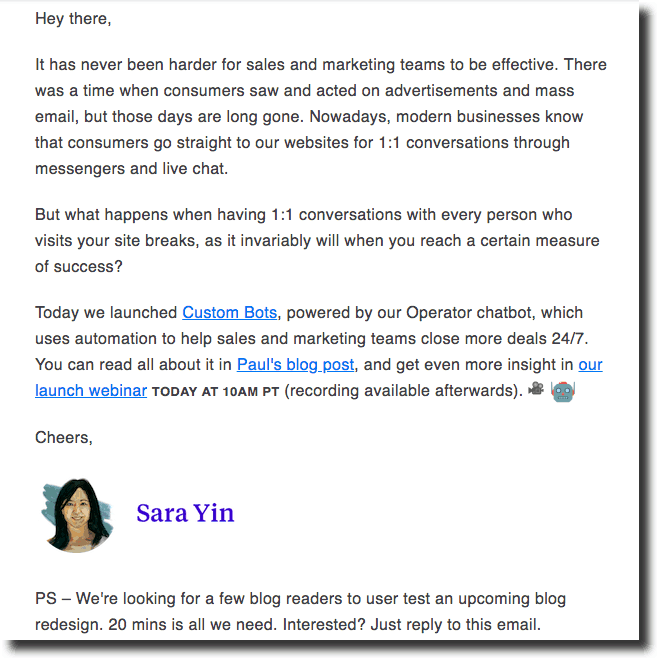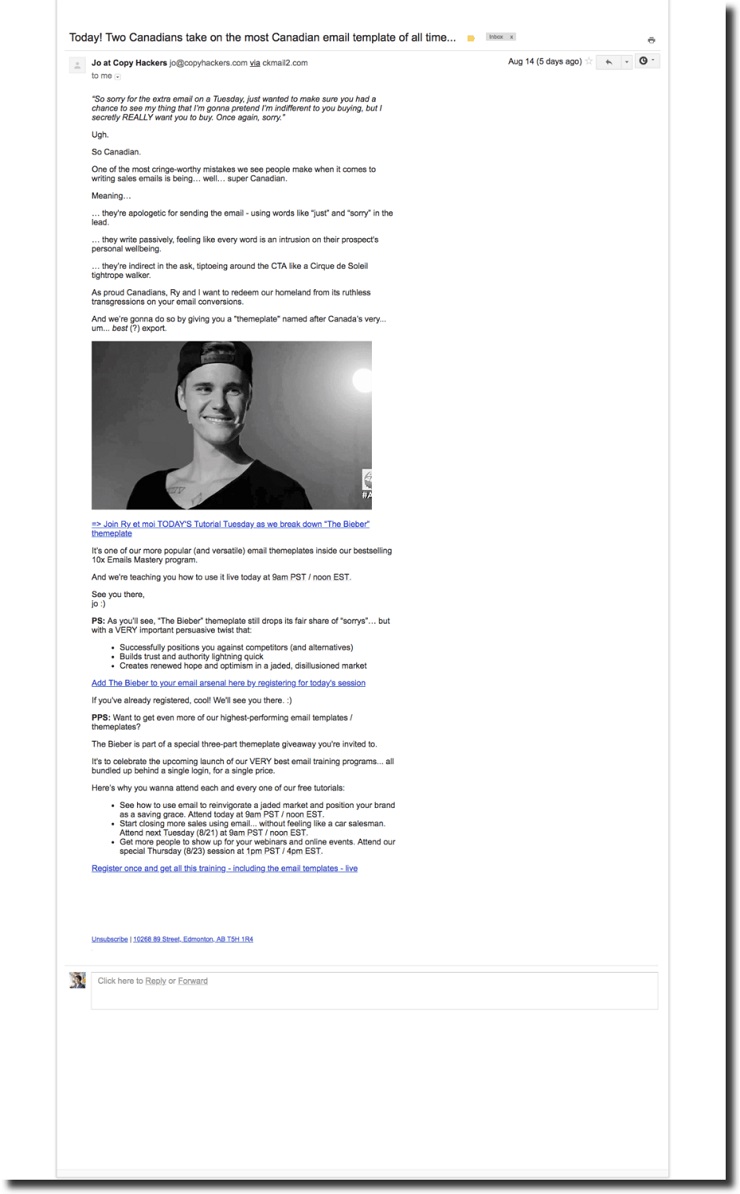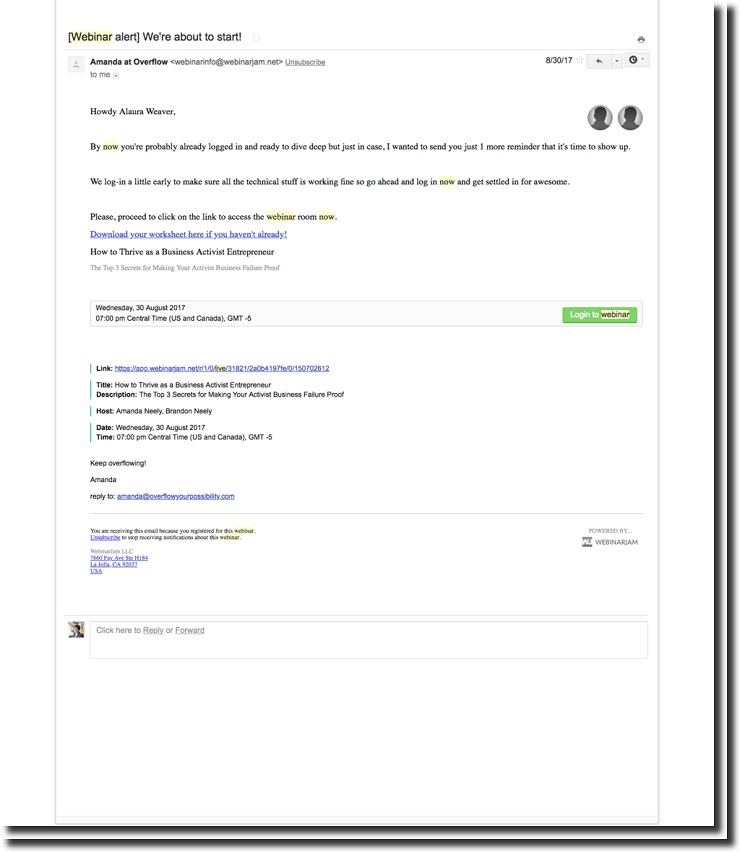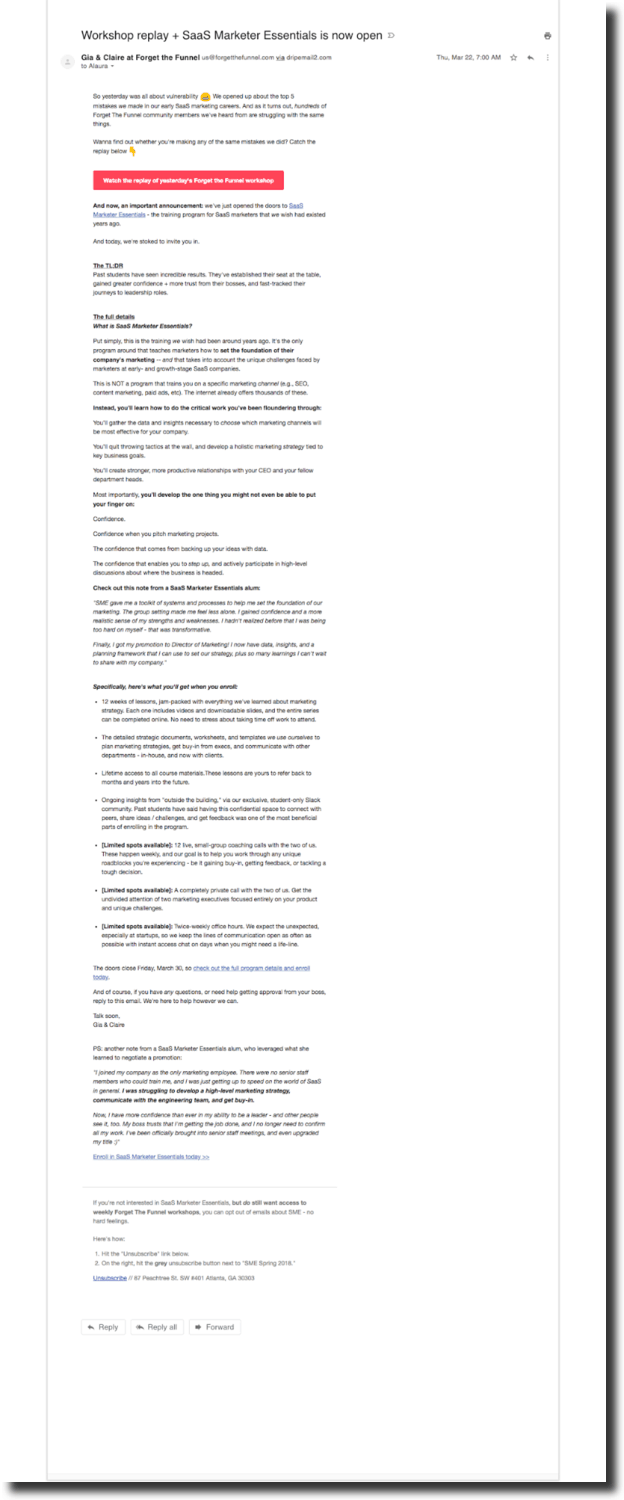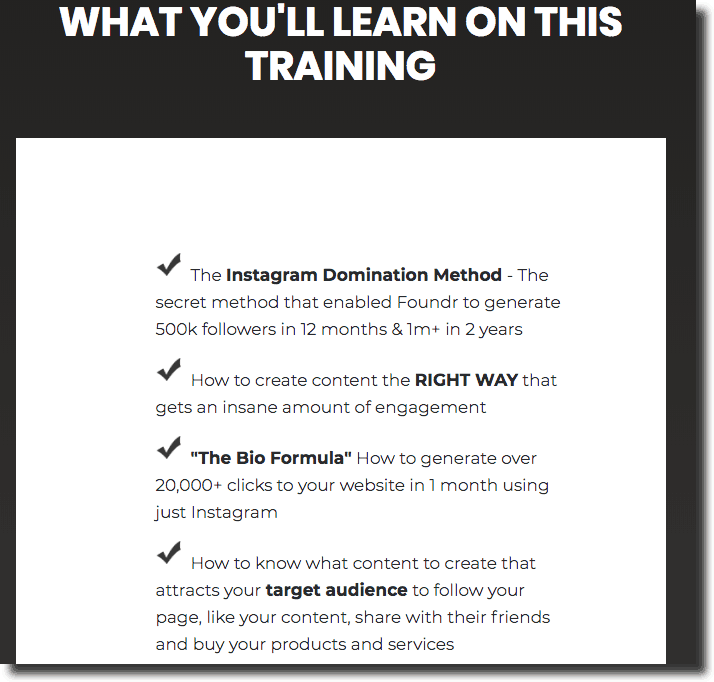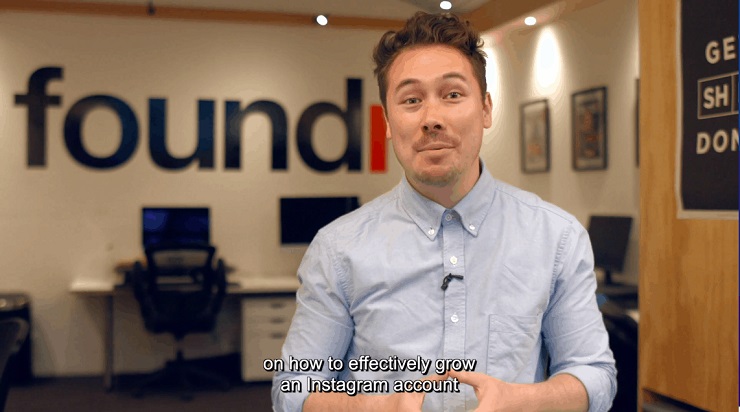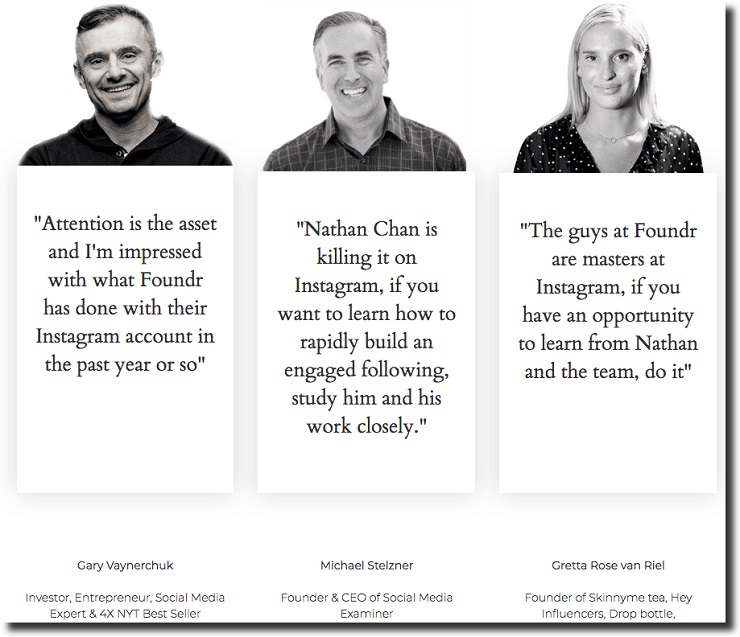Chris Orlob had everything ready for his webinar. His laptop sat on the conference room table in his local coworking space, his slide deck was in presentation mode, and 2,000 people were logged in. Then the nightmare began.
“Ten minutes into the presentation, with all 2,000 faces watching, I was kicked out of the room,” he confessed in a recent LinkedIn post. Orlob had forgotten to reserve the room. “I had to explain to 2,000 people that we would be taking a short ‘intermission.’”
So he scrambled around the packed office, looking for an available room. When he finally found one several minutes later, he was sure most of his attendees had left the webinar. He opened his laptop with a heavy heart.
This disaster scenario is probably something you’ve either experienced or dreaded. Webinars are an excellent lead capture and sales tools, but when things go wrong, they have the potential to be embarrassing and disheartening. You can miss details and sabotage yourself. When your webinar goes live, your presentation might be boring, send attendees fleeing in droves, or worse, not have any attendees to begin with.
But Chris Orlob’s story has a different ending. And it sheds some light on what it truly takes to create a successful webinar that sells, including the secret wisdom that experts I spoke with confirmed over and over.
Webinar Wipeout or Webinar Win?
Let’s go back to where we left Orlob, about to resume his webinar, fully expecting to see that most of his visitors were gone.
“Everyone was still there.” Orlob was amazed. He continued, and afterwards his guests left comments praising his presentation. Many couldn’t wait to share his slide deck with their teams.
It was his highest-converting webinar to date.
So what was his secret? How did he manage to get 2,000 perfect strangers to sign up, stick around to the end after a disastrous start, and then go on to tell their colleagues about how good it was?
The Secret to Creating Effective Webinars That Sell
Chris Orlob and other marketing experts I asked all attract, captivate, and convert webinar attendees using straightforward practices that you can easily follow. But they do share one common trait that has nothing to do with flashy slide decks or sales gimmicks.
The secret is delivering genuine value to your attendees so they can’t imagine not doing business with you.
Do that, and no mishap or misstep can trip you up. In fact, they might even find such screw-ups endearing.
As one webinar guest commented to Orlob: “If the content is good and the subject matter is of value, nobody is going anywhere!”
Okay, but what makes good webinar content?
And does good webinar content even matter if no one registers in the first place?
To dive into the details of running a successful webinar, I put the following question to some of the top digital marketing experts on the web:
What does it take to create and promote a webinar full of excellent content that delivers meaningful value—and plenty of sales?
Here’s what they had to say.
Ingredient 1: An Irresistible Webinar Topic
Nearly every webinar expert out there agrees: the best way to attract plenty of qualified leads to your webinar is to use a topic that your customers care about. And you don’t have to guess—validate your topic by talking to your customers.
Sue Duris, customer experience and digital marketing strategist at M4 Communications speaks at tech conferences (both virtual and in-person) around the world. Over the past decade, she’s planned, hosted, and guest hosted many webinars. She says the top priority for any webinar host is to deliver a presentation that will benefit your audience, regardless of whether they decide to buy from you.
“The number one thing I have found that works for webinar registrations, staying for the entire session, recommending sessions, and later, for on-demand registrations is to make it a valuable experience for your audience,” Duris says.
So how do you know what’s valuable to your audience?
Ask them, says Georgiana Laudi of A Better CX, who along with Claire Suellentrop of Love Your Customers hosts the Forget The Funnel weekly webinar series for SaaS marketers.
“Before we ever recorded a single workshop, we published a blog post about the problem we were hoping to solve. By the time we launched the series, we had 100+ marketers tell us exactly what they were struggling with, and 500+ waiting for to land,” Laudi says.
Here are some ideas for getting customer-sourced webinar topic ideas:
Check Out a Facebook/Slack Group
One of the best ways to collect ideas for any kind of content—blog posts, courses or webinars—is to scan discussion groups where your target audience gathers and see what they ask the most about.
For example, if you’re a business coach and a question that pops up over and over again in a freelance copywriter group is “how much should I charge for X?” BOOM: there’s your webinar topic.
Better yet: once you create the webinar, let the Facebook group know you’re hosting it.
Get on Zoom/Google Hangouts
Take some time to invite your best customers to join you on a free, face-to-face consultation. Find out what they’ve been struggling with or what they wish they knew how to do. Just be sure that you offer something in return, whether it be guidance, a gift card, a free month, you get the point. Make it worth their time.
Bonus tip: Record and transcribe the call so you can incorporate your customers actual words about their challenges into your webinar invitation and landing page.
Search Quora
Quora has rapidly become the place folks go when they want a question answered by an expert.
If a lot of people follow a question or upvote an answer, that means people out there care about the topic and need information on it, from a pro.
Once you create a webinar, you can also promote it on Quora within the context of a well-written answer.
Want the simple 6-step framework behind 10X revenue growth? Get a 10-step growth-hacking formula anyone can follow in our new course. Click below to learn more and join our VIP waitlist to be notified when the course opens for enrollment.
Get The Simple 6-step Framework Behind 10X Revenue Growth! Click To Join Our FREE VIP Waitlist Now.
Ingredient 2: An Anticipation-Building Email Campaign
Webinar invitations are often relegated to the sidebar of a company’s weekly e-newsletter or a social media post, which sends a message to your potential audience: “It’s not a big deal, but hey, we’d love to see you there.”
Your webinar is a big deal. It’s the next-best thing to an in-person interaction. So let your audience know what a big deal it is by building up their sense of tension, curiosity, and anticipation, so when you finally announce your webinar, they can’t wait to be one of the first to register, attend, and tell all their friends.
Justine Jordan, VP of marketing at email software tool Litmus, discovered the power of the standalone email invite. “We used to send newsletters with webinar registration links inside, but have found that sending dedicated emails for each webinar results in many more registrations.”
Jordan’s experience is backed by the numbers. According to conversion copywriting expert Joanna Wiebe of Copy Hackers, “Email invitations are responsible for 58-64% of webinar registrations, compared to social media and search, at about 15%.”
So what should you include in your email campaign?
Here’s a six-part email sequence Wiebe recommends:
1. The Sneak Peek (2 weeks before webinar) – If your newsletter goes out weekly, pop in a quick note letting your subscribers know that you have a webinar coming up. Let them know the topic, but that’s it. Promise to get them more details in a future email.
Here’s an example from Intercom’s weekly digest, Inside Intercom:
2. The ‘Save The Date’ P.S. (1 week before webinar) – This message, included as either a postscript to your next newsletter or a standalone email reveals the date of your webinar, but not much else.
Here’s an example of a save-the-date email for CouchCon, all-day virtual conference from video hosting service Wistia. Notice how they make sure the date is in the subject line and there are no in-depth descriptions of the individual webinar workshops.
3. The Webinar Registration Invite (2-4 days before webinar OR the same day as the webinar) – Finally, you break the tension and give your subscribers all the details.
Here’s an example of the Intercom webinar invite:
Here’s a brief list of components you need to include in your webinar invite email:
- WHY you’re offering this webinar
- WHO will be hosting it and WHO it’s for; If you have a guest, include their bio
- WHAT key takeaways your customer can expect, including any exclusive offers people will get by attending
- WHEN the webinar will take place (make sure you include time zones!)
- HOW they can register (this is where you place a prominent button or link to your registration page)
4. The Day-Of Reminder – Drop a quick reminder that your webinar will be going live today. Keep in mind that a third of webinar attendees don’t register until the day of, so this is your opportunity to grab the attention of anyone who might have been dilly-dallying or missed your previous invite.
Here’s a recent (hilarious) example of a day-of reminder from Copy Hackers’ Tutorial Tuesdays:
5. The ‘We’re Live Now’ Alert – Usher stragglers into the webinar with a straightforward message and call-to-action button. This is especially helpful if there’s a worksheet or other resource your participants will be using as they follow along.
Here’s an example from Amanda Neeley’s webinar for activist entrepreneurs:
6. The Replay – A day or two after the webinar (or in your next newsletter), invite anyone who couldn’t attend to watch the webinar recording. This is also an opportunity to introduce any paid product/training related to the webinar (aka the beginning of your sales sequence).
Here’s an example from Forget The Funnel, offering a replay and unveiling a SaaS marketer training program:
Ingredient 3: A Crystal-Clear, Benefit-Driven Landing Page
Your webinar landing page isn’t a sales page, but you still need to assure your audience that you know what you’re doing, and that they will benefit from signing up, while also creating a little FOMO.
Let’s dissect the sign-up page for Foundr’s free webinar on increasing Instagram followers. Here are the lessons you can take from this webinar sign-up page:
Clarity Is Key
This isn’t the time to be cute or clever. Just get to the point with your headline and talk about the outcomes your audience should have after following the methods discussed in your webinar.
Copyblogger contributor Beth Hayden advises: “Keep your copy short and clear. Make sure your bullets are simple, easy to read, and include a crystal clear call to action.”
Videos Build Trust
Have you ever left in the middle of a webinar because the speaker was too boring (think Ben Stein in Ferris Bueller’s Day Off), or too scuzzy (think the Shamwow guy)?
To nip this situation in the bud, give your audience a glimpse of what they can expect by creating a short video for the landing page, featuring you discussing what you’ll be teaching in the webinar.
Provide Social Proof
There are quotes from three influential marketing experts (including Gary Vee!) praising Foundr, proving Foundr is the real deal.
Testimonials, including social media shout-outs and customer reviews, are some of the most powerful marketing tools you have. Here’s how you can start using social proof to help get webinar sign-ups and more.
Turn Up the Scarcity
One more thing: Ushering people into a live webinar is all about urgency. After all, why shouldn’t they wait for you to release the recording so they can watch in their own time? Use tools like countdown timers (as seen in the Foundr page) or exclusive live-only offers.
Want to create a landing page? The following drag-and-drop landing page platforms have wonderful, easy to use templates:
Unbounce – This landing page builder has *tons* of customization and optimization tools. It’s super easy to integrate analytic tools and third-party apps.
Leadpages – One of the easiest landing page builders to use (not to mention the least expensive), Leadpages is a favorite for ecommerce because it has shopping cart and Stripe capabilities.
Instapage – If you’re working with a team, Instapage stands out among the rest for its collaboration features. You can share, comment, and assign tasks to your team members as you build the landing page together.
Want the simple 6-step framework behind 10X revenue growth? Get a 10-step growth-hacking formula anyone can follow in our new course. Click below to learn more and join our VIP waitlist to be notified when the course opens for enrollment.
Get The Simple 6-step Framework Behind 10X Revenue Growth! Click To Join Our FREE VIP Waitlist Now.
Ingredient 4: An Enticing Post-Webinar Bonus Offer
Speaking of offers, sometimes the call of Facebook feeds or free donuts in the breakroom can lure webinar attendees away from your presentation before you get an opportunity to mention your product/service/offer.
Fight fire with fire. At the very beginning of the webinar, let your audience know that they’ll get a freebie if they stick around to the end.
Neil Patel, co-founder of Kissmetrics discovered this tactic from his webinar guests: “We’d invite guests to host the webinars, and they would offer a bonus at the end in order to increase the attendance rate (and rate of staying through the whole webinar).”
Here are some ideas for free bonus goodies for your webinar attendees:
- Self-paced online course
- Templates
- 1:1 consultation/evaluation
- Ebook
- Trial membership
- Coupons/discount codes
Ingredient 5: A Captivating Opening Story
Okay, so you’ve convinced a group of live human beings to sit in front of their screens to learn from you. How do you start?
Like any presentation, one reliable way to begin is with a personal story or anecdote. It offers the answer to the question, “Why should I care?” and gets your audience to see you as an ally.
Whatever you do, don’t turn your webinar into an epic one-person show ending with a high-pressure sales pitch.
Facebook Ad Strategist Marya Jan advises that you make your opening story about your audience: “Make it brief and relevant. Talk about parts your audience can relate to. Build in some social proof, but don’t dwell on it too long.”
A powerful storytelling tactic for keeping the attention of an audience is called “the open loop”:
- Tell your personal story
- Ask, “Now what does all that have to do with <webinar topic>? I’ll tell you in a moment, but first, let’s talk about what brings you here today.”
- Move into the problems your audience faces when it comes to the subject of the webinar.
- When you reach a point where your story directly relates to the solution, “close the loop” by recalling your personal story.
If you’re looking for an example of a webinar that opens with a personal story relating to the subject matter, you can listen to the audio version of yours truly talking about customer personas on Forget The Funnel (or watch the workshop recording here):
Ingredient 6: A Genuine Focus on Delivering Value and Building Relationships
Let’s face it: too many of us have been burned by the “sales pitch disguised as a webinar” bait-and-switch. We’ve gone into so many of these salesy webinars that we’ve started to get suspicious every time we get invited to one.
Do your customers a favor—don’t be shady.
Build trust by teaching them what you promise to teach them.
Give your product a little shout-out at the end, but save the sales pitch for the follow-up sales campaign.
Nivas Ravichandran, product marketer at Freshsales CRM says that their webinars are 100% focused on delivering information. “We decided to keep webinars just value add and no product pitch. If we are , we clearly specify instead of trying to plug it indirectly.”
They must be doing something right. Freshsales has gained over 10,000 customers from 50 countries since launching a year and a half ago.
And if the goal of your webinar strategy is specifically to get people to buy your product? Don’t be coy; tell them. If you’ve built a strong marketing funnel and target your audience at the right stage, they should be ready and eager to buy.
Oz Merchant, global customer success expert and founder of goal-setting app CruxChat, advises that you consider where they are in their level of awareness and familiarity with your company and its offerings.
” depends on how high up the funnel you are targeting, “ he says. ”The higher you go, the less it needs to be about product and more about industry or trends or ROI analysis type topics. As they work their way down the funnel closer to becoming a prospect, then focus on product.”
Ingredient 7: One Magnetic Call-to-Action at the End
Which brings us to the point.
What is the point of your webinar? What is your webinar strategy all about?
Are you hosting it to help your audience become better educated about a problem your product or service can help solve? If so, your call to action can be in service of their further education by offering an ebook or a course.
Are you hosting your webinar to get potential customers to try out a new feature of your product? Your call to action can be about signing up for a demo.
By identifying what your customer will want to do after the webinar is over and aligning your offer to that desire, you’re setting yourself up for conversions galore.
Patrick Hodgdon, senior growth manager at ProfitWell, advises that you make sure your call to action is an easy ask that people can do immediately, and feature it prominently during the Q&A portion.
“Have only one call to action for next steps (toward working with you/your company) and put it on the very final slide. Then leave that slide up while you answer any/all questions attendees have. Even if it was only scheduled an hour, we had hundreds of people staying 30-45 minutes beyond to get a question answered.”
Want the simple 6-step framework behind 10X revenue growth? Get a 10-step growth-hacking formula anyone can follow in our new course. Click below to learn more and join our VIP waitlist to be notified when the course opens for enrollment.
Get The Simple 6-step Framework Behind 10X Revenue Growth! Click To Join Our FREE VIP Waitlist Now.
Building a Webinar Strategy is About Building Relationships
Like any marketing tool, a webinar is just another opportunity to build meaningful connections with your customers.
And promoting and presenting a high-converting webinar is built upon the same rules of any healthy relationship:
- ask lots of questions at first
- don’t talk too much about yourself
- offer to help them
- thank them with a favor or a gift
- invite them to get together again
The bottom line is that same lesson Chris Orlob learned—providing genuine value, giving, is above all what makes a webinar successful.
May your webinar be the beginning of many beautiful and prosperous relationships to come!
What are your favorite pro tips for making a winning webinar? Leave a comment!
